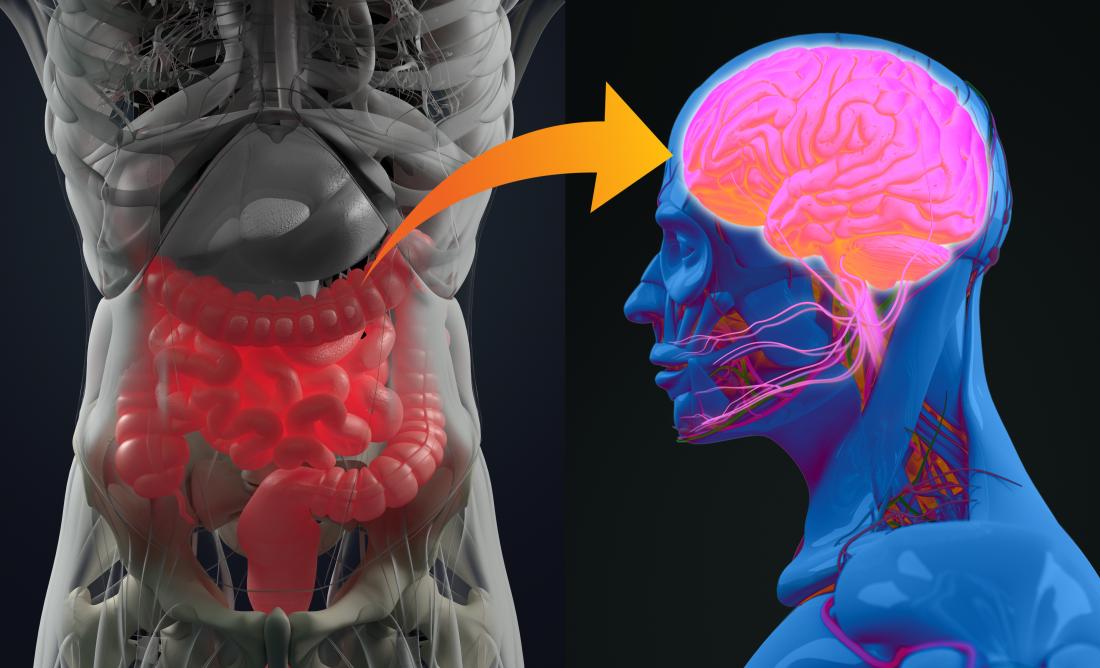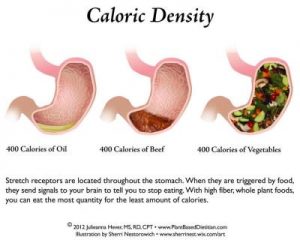
You Are What You Eat: This is what Happens to Our Stomach Receptors When We Eat Junk Food
Have you ever felt super full after eating a low-calorie meal, or still hungry after eating a calorie dense one? Contrary to popular belief, it’s because our stomachs don’t get filled up as quickly when we eat high-calorie foods like meats and oils as they do when we consume more nutrient-dense, lighter foods like fruits and vegetables. This happens because of how our stomach receptors and nutrient receptors work.
How Our Stomach Receptors Determine That We’re Full
Many people seem to be terrified of raw food diets because people on plant-based diets tend to eat more food. However, have you ever actually seen someone gain weight by eating a plant-based diet? Odds are that you haven’t, because they’ve cut out high calorie foods like meat, dairy, and on some occasions, oil. In reality, people on plant-based diets typically lose weight because, even though they’re eating more volume, they’re getting far more nutrients and eating far fewer calories (source).
In our stomachs, we have nutrient (or caloric) sensors and stretch receptors. Most of the calories found in a typical North American diet are made up of animal products and processed foods, meaning that most people are severely nutrient and fiber deficient. If your diet doesn’t have enough plant-based foods in it and you’re not getting enough nutrients, your body will continue to feel hungry until those needs are met. Plus, high-fat foods and sweets dull our dopamine reward system, leaving us feeling unsatisfied, even if we’ve just consumed a high-calorie meal.
It’s kind of beautiful because your body is literally telling you that you aren’t feeding it what it wants. Your body will actually communicate with you — all you have to do is listen. Stretch receptors will also send a signal to our brains, telling us the stomach is full, but they only send these messages once our stomach has enough bulk or volume in it. Fiber is what provides the most amount of bulk, something that processed foods and animal products lack, whereas plant-based foods are rich in it. This concept is also known as “volumetrics,” a term coined by Barbara Rolls, Ph.D., a nutritionist at Penn State.
For example, the following diagram by Julianna Hever illustrates what 400 calories in our stomach looks like depending on what types of food we’ve consumed:

As you can see, the stomach on the right that’s full of vegetables has a sufficient volume of food inside of it, so at this point the stomach receptors would send a signal to the brain telling you you’re full. You’d need to consume far more animal products or greasy foods to achieve the same level of satisfaction, which of course would be way more calories.
Dr. John McDougall maintains that the average stomach can hold about 1 to 1.5 liters of food. Filling the stomach with foods that are lower in calories and higher in nutrients, like plants, instead of high-calories foods like animal products and oils, can help maintain an ideal weight or achieve weight loss. You don’t even need to think of it like dieting because you aren’t starving yourself, you’re just giving your body the required amount of nutrients it craves (source).
The documentary Forks Over Knives touches upon the American diet and how we need to transition from eating fewer processed foods and animal products and more plant-based foods. The documentary also dives into how stomach receptors and caloric density work, and you can watch a short clip taken from it below:
Food addictions aren’t simply a product of the mind; they’re actually a result of our bodies giving us the wrong signals. When we feed our bodies foods that they don’t really know what to do with, like high-calorie foods that are rich in animal products, toxins, pesticides, and GMOs, our bodies don’t get an adequate amount of micronutrients. As a result, our bodies essentially tell us to overeat because they’re still not satisfied.
With this logic, even by exercising self control or counting calories, you still won’t become healthy. In order to take back your health and lose weight or maintain a healthy body weight, you need to nourish your body with the nutrients it desires. Then, if you’re actually feeding your body foods that are healthy for it, you won’t need to count calories because your body will feel satisfied! You also won’t need to exercise so much self control because your desire to eat more won’t be as strong in the first place.
Of course, there are other factors that play into food addictions that are outside of our bodies, such as social conditioning and government and corporate propaganda. The government lies about the amount of dairy and meat we should consume and corporations create false advertising and put misleading labels on their products like “low fat,” “low calorie,” “made with organic ingredients,” and “gluten free,” none of which indicate the healthfulness of any given product.
Despite these outside factors, it’s up to us to overcome our food addictions and reclaim our health.

 My First Amazing Ayahuasca Experience
My First Amazing Ayahuasca Experience  Pine Needle Tea
Pine Needle Tea  The REAL Controllers of Humanity: The Papal Bloodlines
The REAL Controllers of Humanity: The Papal Bloodlines  Is it Global Warming or Cooling?
Is it Global Warming or Cooling?  Gun Rights and Obama Examined
Gun Rights and Obama Examined